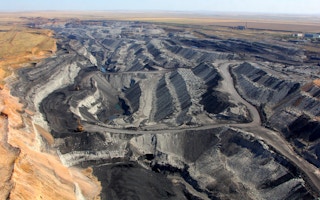At the recent midyear UN climate negotiations in Bonn, an unprecedented 60 countries (including Germany) called for a total phase-out of fossil fuels by 2050, as part of a global agreement on climate change to be concluded in Paris in 2015.
Meanwhile, on tour in North America, Prime Minister Tony Abbott declared that: “For many decades at least, coal will continue to fuel human progress as an affordable, dependable energy source for wealthy and developing countries alike”.
But Mr Abbott’s “coal forever” scenario is only likely if we fail to develop a global agreement to tackle climate change, which could come as soon as the end of next year in Paris. Such global action would dramatically reduce the use of fossil fuels over the coming decades, particularly coal for electricity production.
So, what is likely to happen to coal use and Australian coal exports in the coming decades?
Energy and steel
What happens to coal will depend on what the world does to address climate change. Any scenario that seriously addresses climate change will lead to reduced use of coal, particularly thermal/steam coal used to generate electricity.
Most of the world’s coal production goes to electricity generation — and 41% of the world’s electricity comes from coal. But renewable energy substitutes are already available and increasing becoming competitive with coal, even before significant policy measures to address climate change are introduced. In the coming decades, efforts to address climate change will likely dramatically reduce the use of coal for electricity.
Coal is also used for steel-making — 13% of global coal production is used to produce 70% of the world’s steel. Substitutes for this coking coal are not so readily available and possibly carbon, capture and storage (CCS) may be required to reduce emissions. Recycling iron and steel — using electricity from renewable sources — may also play a part in cutting carbon emissions from coking coal.
Climate action
In its 2013 report, the International Energy Agency modelled what impact climate action would have on the energy industry. In one scenario, using a relatively weak global climate policy (which had only a moderate chance of limiting warming to 2C), coal’s share of global energy output dropped to about half of current levels by 2035.
“
Abbott’s “coal forever” scenario is only likely if we fail to develop a global agreement to tackle climate change, which could come as soon as the end of next year in Paris. Such global action would dramatically reduce the use of fossil fuels over the coming decades, particularly coal for electricity production.
According to climate action group 350.org, 80% of already proven fossil fuel reserves will have to remain unused in order to limit warming to less than 2C above pre-industrial levels. The total phase-out of fossil fuel use by 2050 is also clearly a possible outcome of global climate agreement in Paris 2015.
The greatest reductions will likely come from coal. Oil and gas are more versatile fossil fuels, and produce less carbon emissions when burnt. To keep warming to less than 2C, more than 80% of the vast proven global coal reserves, including those in Australia, will need to remain in the ground.
Good and bad news for Australian coal
The only good news for Australia is that 40% of our current coal exports are coking coal for steel-making. The lack of immediate substitutes for coking coal will likely mean that demand for coking coal will not fall away so rapidly as demand for coal for electricity generation, which is already weakening.
Exports make up a large proportion of Australia’s coal production — 80% of our coal for electricity, and 96% of our coal for steel-making. The bad news is that two of our three major markets, China and India, meet most of their demand from domestic coal production.
China produces over 90% of the coal is uses for electricity and 88% of its coking coal. India is a much smaller user of coal, using less than 20% of China’s consumption, but is slightly more dependent on imports. India currently producing 80% of its own steam coal and 56% of its coking coal.
The third major coal importing country, Japan is much more reliant on imported coal than China or India for both steam and coking coal. If the world agrees to reduce fossil fuel use, China and India are likely to be able to meet most or all of their needs for steam coal domestically in coming decades and not rely on imports from Australia.
Other evidence indicates that that the incentives provided to switch away from fossil fuel power generation for these countries in a global climate change agreement do not need to be that high. Wind power is already competitive with coal fired power in India and solar is expected to be competitive within a few years.
Instead of repealing the carbon price this week, our newly elected senators should be working out additional policies and measures to further reduce Australia’s reliance on coal mining both domestically and for exports.
The healthiest scenario for the planet is a very unhealthy scenario for Australia’s coal — particularly coal for electricity generation.
Ian McGregor is a lecturer in Management at the University of Technology Sydney (UTS) and a member of the Climate Action Research Group in the Cosmopolitan Civil Societies Research Centre at UTS. This post originally appeared in The Conversation.









